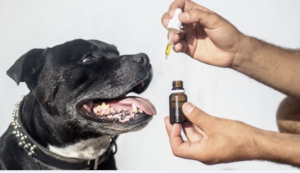In today’s world, the demand for adorable and photogenic dogs has given rise to a concerning trend: breeding dogs to have permanent, baby-like features. These dogs, often characterised by flattened faces, bulging eyes, and short legs, may have the look of the “forever baby”, but behind these features are concerning health issues. In this blog post, we will delve into the consequences of breeding for cuteness, which has led to compromised breathing, vision issues, impaired mobility, and reduced overall well-being in our canine companions.
The dark side of selective breeding
Selective breeding (the process of breeding animals for specific traits) has been a central part of dog breeding for many years. However, the recent focus on extreme cuteness has encouraged breeders to prioritise certain physical characteristics over the welfare of the animals. As a result, breed standards (the guidelines which outline the ideal or desirable characteristics of a particular breed) are promoting unhealthy features, leading to a host of health problems that persist throughout a dog’s life.
Brachycephalic breeds and breathing difficulties
One of the most concerning outcomes of this emphasis on cuteness is the rise in popularity of brachycephalic breeds, such as the Bulldog, Pug, and French Bulldog. These breeds are characterised by their pushed-in faces and shortened muzzles, which can result in severe respiratory issues. The shortened airways restrict airflow, making it difficult for these dogs to breathe properly, especially in stressful situations or during exercise. This persistent struggle for breath can lead to chronic respiratory distress, sleep apnea, and heat intolerance – all of which can be potentially life threatening for dogs.
Eye issues and poor vision
Another negative consequence of breeding for cuteness is a growing prevalence of eye-related problems in certain breeds. Breeds like the Pekingese and Shih Tzu, with their large, bulging eyes, are prone to various eye conditions, including proptosis, corneal ulcers, and progressive retinal atrophy. Dogs with this increased risk of eye injuries and infections often require special care, frequent veterinary visits, and sometimes even corrective surgeries to manage these conditions.
Mobility impairment
In the pursuit of creating baby-like dogs, some breeders have focused on selectively breeding for extremely short legs. This has led to the emergence of breeds like the Dachshund and Basset Hound, which have disproportionately long spines in relation to their leg length. As a result, these breeds are more prone to spinal issues such as intervertebral disc disease and mobility challenges that can cause pain, discomfort, limited movement – all of which have a negative impact on quality of life.
Redefining breed standards for a healthier future
It is essential for breeders and kennel clubs to address the issue of breed standards that perpetuate unhealthy physical traits in dogs. Responsible breeding practices should prioritise the overall health and well-being of the animals, emphasising the selection of traits that do not compromise their quality of life. Breed standards must shift away from promoting extreme physical features that lead to health issues and instead prioritise genetic diversity and the absence of inherited conditions.
Adopting a health-focused mindset
As pet owners and dog lovers, we have a significant role to play in combating this issue. It is crucial to educate ourselves about the health implications of specific breeds and to make informed decisions when choosing a furry companion. Rather than fuelling the demand for “forever baby” dogs with unhealthy features, it’s essential for our community to support the responsible breeding of dogs which prioritises their welfare.
If you have a dog with any of these potential long-term health concerns, and want to explore a natural way to alleviate their discomfort and improve their quality life, please contact our friendly team at CBD Vets Australia.







